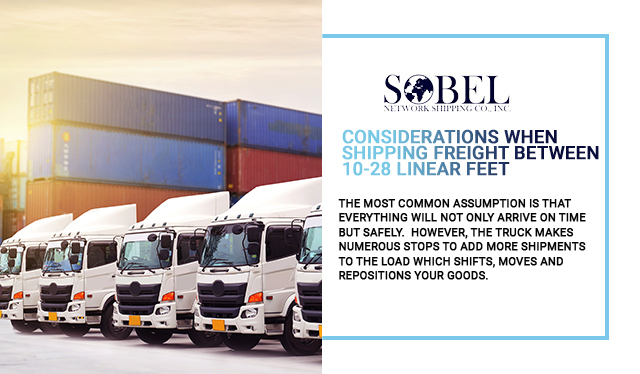Let’s examine an all-too-common scenario. You opt to ship high valued goods by volume
less than truckload (VLTL). The most common assumption is that everything will
not only arrive on time but safely. However, the truck makes numerous
stops to add more shipments to the load which shifts, moves and repositions
your goods.
After several hundred miles, your load is transferred to another
truck. Sadly, each transfer causes damage to your fragile load and is
probably ruined beyond repair by the time it arrives at its destination. At this
point, you are liable for a substantial amount of money.
Ultimately, your goods reach their destination two days late and your final fee for
shipment is high. Additional layover fees and reweighs have all taken place.
The question is, how can you ship about 10 to 28 linear feet without incurring
damage and astronomical costs?
What Does a Shipper Want and Expect?
All shippers have one goal – to transport goods effectively and efficiently.
Choosing a type of freight transportation is complicated. There are advantages
and disadvantages to all systems. If you want to move from 10 to 28 linear feet, then you have two options: partial truckload (PTL) or volume-less than truckload. Shippers expect the
following:
- Savings
- No damage
- Easy and straightforward tracking
- Fast transit
- High level of service
Often expectations are simply too high and far beyond the capabilities of PTL and
VLTL.
Understanding Volume Less Than Truckload and Partial Truckload
Partial Truckload
If a shipment is too large for less-than-truckload (LTL) but not sufficient for full
truckload (TL) service, there is another option, midsize freight. The partial
rates implemented are set up on cost per mile and there is no freight class.
A partial will ship on a single truck so there is reason to worry about loading and
unloading damage often occurs with LTL shipments.
Volume Less Than Truckload
Volume LTL is for loads that are larger than LTL but too small to use TL. The size of
VLTL lands between truckload freight and LTL. This system usually requires
multiple stops, and the goods are transferred from truck to truck.
Problems with Partial Truckload
The entire service is slow-moving with extra stops which takes time. Usually, a
driver will wait for the trailer to become full before embarking on their
route. This makes the process slow.
Problems with Volume LTL Service
This is often called the hub and spoke system and it is notoriously unreliable. The
loads are handed frequently which leads to damage. The shipment will also
unload and load with additional freight along the way.
The truck makes frequent stops at numerous terminals, so your goods are relocated between
several trailers before arriving at their destination. Transit time is very
slow with this method and the risk to freight is high.
The entire process of VLTL is also very time-consuming as the trucks run through a
wide array of terminals.
- VLTL lacks speed and efficiency. It is typically not considered reliable.
- Complicated
- Freight Classification System
- Volume
- LTL relies on a freight classification system to figure out pricing and quotes.
The system is provided by the National Motor Freight Traffic Association (NMFTA) which looks at factors like:
- Handling
- Weight
- Length
- Height
- Liability
- Value
- Density
Shippers are tasked with figuring out the correct NMFC Number (the number that
establishes the carrier’s freight cost) and determine the fright class for
correct billing. Such determinations can lead to mistakes. Shippers often miss
overcharging.
- Limited
- Liability
- Volume
LTL has very low liability compared to other types of trucks. Usually, it is no
more than a dollar per pound compared to LTL which is $5 to $25 per pound. If
things become damaged, then the shipper will experience a significant financial
loss.
Accessorial Charges
Certain accessorial charges occur after the load is delivered. Such charges are not
known at the time of shipping. The additional fees cover layovers, reweights,
after-hour deliveries, reclassifications, and redeliveries.
Shared Truckload (STL)
Shared truckload (STL) is an option for shipping 10 to 28 linear feet. It is efficient, cost-effective,
and innovative. Multiple shipments are combined in a multi-stop truckload. The
shared truckload lowers the risk of damage, lengthy delivery times, unnecessary
mileage, and inaccessibility. If you are interested in learning more about the
efficiency and predictability of shared truckloads, contact us today.


